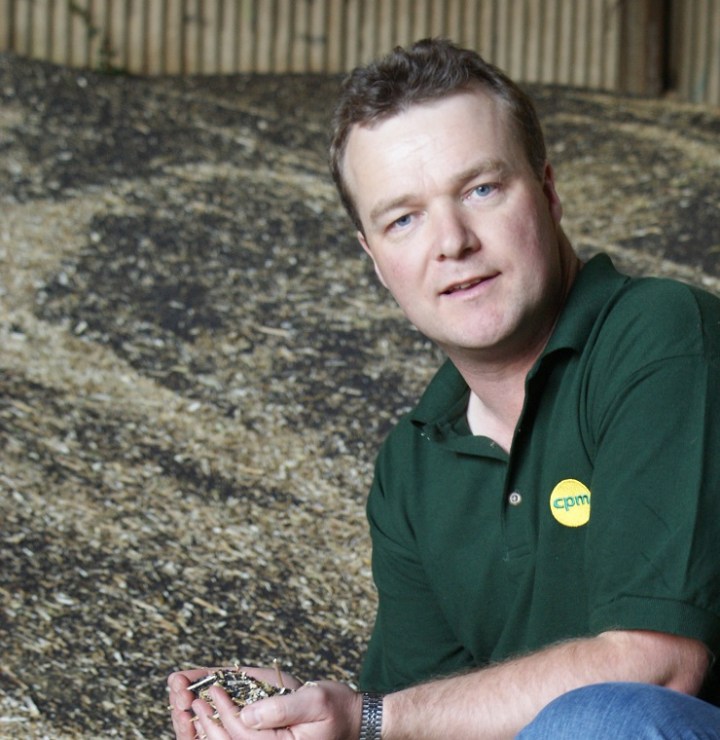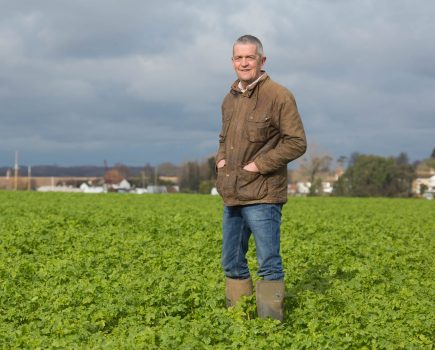I’ve been thinking quite a bit recently about crop husbandry skills – whether I’d be judged to be a fit farmer. What’s brought it into perspective is the huge variability of crops I seem to have in the fields this year.
At one end of the spectrum, there’s a crop of triticale for which I have almost parental pride. My phone is full of dozens of photos of this crop at various growth stages, and boy it looks good and is growing fast – you only have to turn your back and it’s thrown out another leaf. It’s got to the stage where I’m a little anxious for this crop’s boisterous joie de vivre, and concerned that it’ll all go flat before it matures.
Then there’s some rather sad-looking winter wheat. To be fair, this never had the best start in life – a bit of an afterthought when the cover crop suddenly turned into a catch crop in late Nov, and what was to be a spring wheat turned into a winter type. It sits in its cold bed of clay, looking pale and sulking mopishly.
I vex about what I can do to align the fortunes of these two crops – I’m here to feed them their needs, keep them protected and guide them to maturity. But the real guidance seems to come from a Higher Power – over the next month or so, I’m hoping Nature will work its wizardry, lift that wheat out of its gloom and gently put the reins on the triticale.
The truth is, there’s so much I don’t actually know about those plants and what they’re going through. It’s hard enough to look after the top growth you can see, while for the most part, what’s going on underground remains a complete conundrum.
So what’s brought on this sudden soul-searching, this quest to quite literally go back my roots? Next month, the Fertiliser Bible, RB209, is relaunched. There’s really quite an impressive amount of data and research the hallowed consortium has sifted through to reach the guidelines that now sit within that Sacred Text. As a pious farmer, I know I should sit with it, take in its gospel, and religiously dish out nutrition to my crops according to Its Word.
But I also feel pulled by the New Ways. There are things I’ve heard of, practices followed that can offer my crops a little extra vibrancy. It’s not that I want to turn my back on the Old Church. But the very fact that the hallowed consortium has considered the evidence of the New Ways and deemed them currently unfit for the Sacred Text, makes this an exciting path to follow.
Let me give you an example – it’s one you’ll find within the CPM Nutrition Special. Trials with NPKS fertiliser in the spring are showing something a yield lift over the traditional approach of applying P and K in the autumn then N and S in the spring. The logic is simple, say advocates of this New Way – feed a high-yielding crop its nutrients when it’s actually taking them up.
But the priests of the Old Church question whether there’s any hard evidence such a yield lift exists. The premise of applying P and K is that it replenishes offtake, they say. Most is locked up in the soil then released to the crop over time.
Now there is an attraction in this New Way of thinking – it’s not based on fanatical scripture but good science, and this suggests there are clear benefits to be gained. However, I have to be wary there’s a commercial imperative that drives it, and there may be more benefits for those pushing the practice than for those adopting it.
Equally, is my faith in the Old Church just borne out of indoctrinated loyalty, and would a conservative approach hold back progress I could otherwise be making? What’s more, the Fertiliser Bible itself is changing and practices once deemed unfit for the Sacred Text will be among those included in the edition launched next month.
One thing’s for sure – it can’t harm to read about New Ways, which is precisely why CPM goes out of its way to find them and deliver them in the pages you’ll find here and in every issue of the journal. You can then judge for yourself which is the right path – you won’t go blind, you won’t be condemned to ecological damnation, you may commit a sin, but ultimately it could feel divine.
Tom Allen-Stevens has a 170ha arable farm in Oxon and would be happy to show countless pictures of triticale to anyone unwise enough to show an interest.




